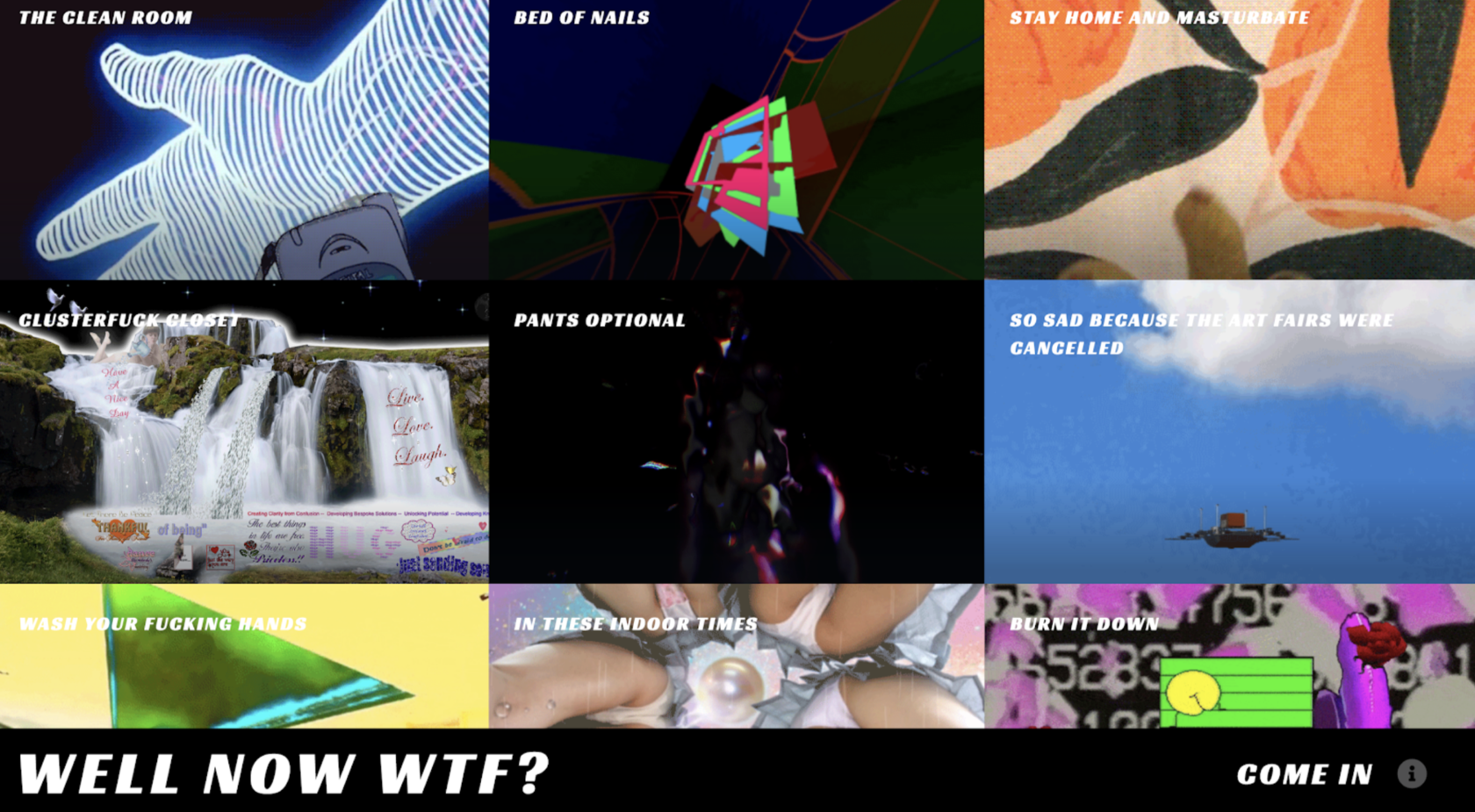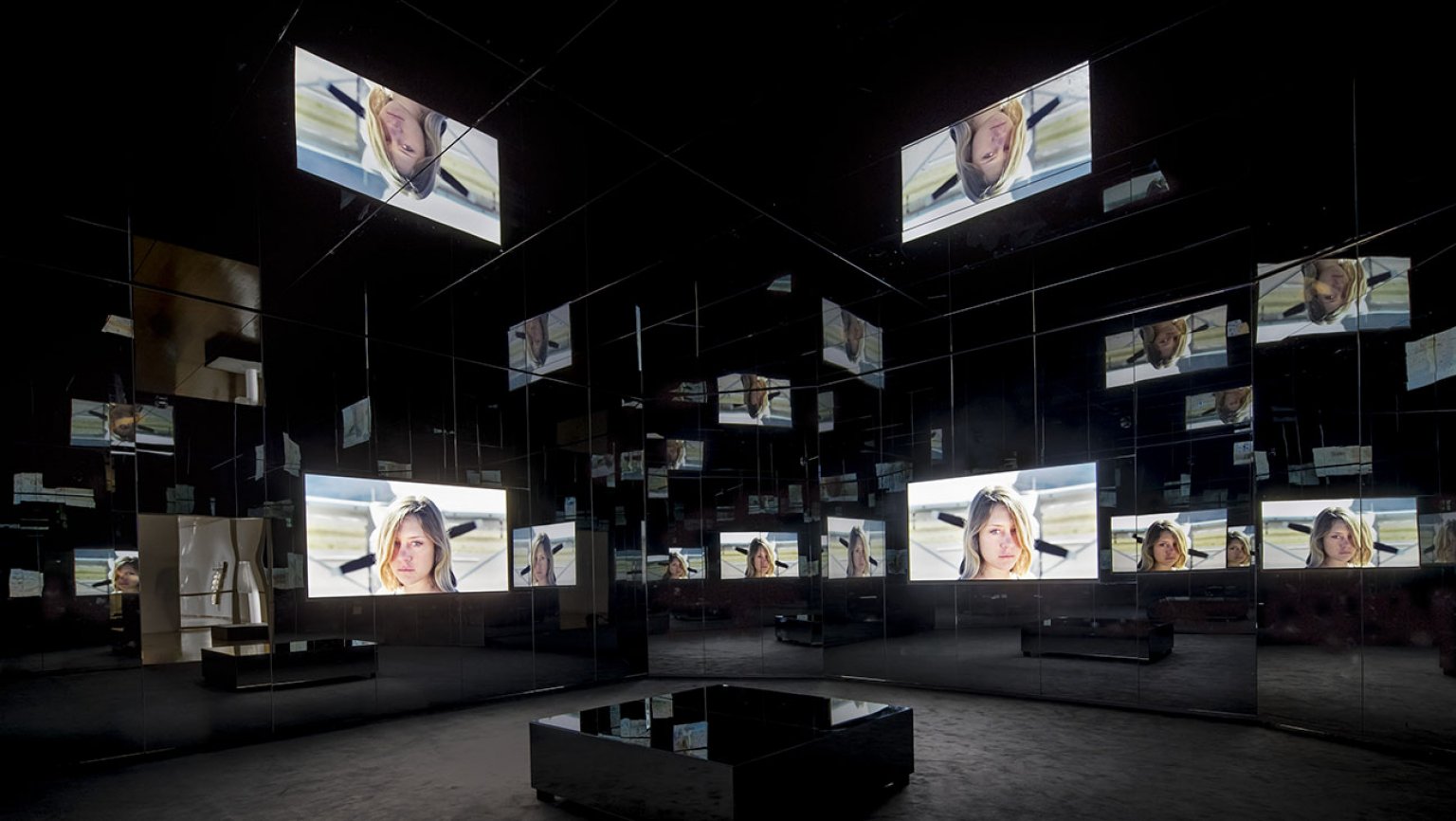Today digital art actively influences culture and offers new forms of interaction with viewers, and interest in the latest digital technologies and media is again capturing the minds of new generations of artists. Recent events related to the global pandemic that formed new conditions for self-isolation, social distance and remote functioning of all contemporary art participants stimulate an increase of experimentation with the creation and display of art online and, at the same time, rethinking the potential of art in public spaces, new forms and functions of digital art it can take on in public spaces an urban environment, placed on screens and media facades. The Audi Born-Digital Award initiative objective is to provide global support for new experimental strategies and tactics in the art environment of the digital natives generation and create favorable conditions for their development and creative expression.

Screenshot of the Well Now Wtf? gallery website
Due to the COVID-19 pandemic, most art museums, galleries, and foundations ' spring plans were disrupted. In response to the inability to get together in a physical space, online initiatives that bring together artists and creative professionals from different countries started to appear. For example, the online exhibition Well Now WTF? (curated by Silicon Valet) has commissioned digital works by more than 100 authors created by them during the quarantine. Some museums, curators, and collectors made their archives available for free. Among them is one of the most influential curators of current time, Hans Ulrich Obrist, who presented his project Do It on the online platform Google Arts & Culture. Now any Internet user can view the collection of more than 500 works in the form of instructions from artists. Digital art collector Julia Stoschek posted 860 video works on the website of her Foundation representing such famous authors as Vito Acconci, Doug Aitken, Kader Attia, Chris Burden, Olafur Eliasson, Vali Export and Andreas Gursky.
In a more global sense, the authors' task now is to understand how art can be useful to society at a time of crisis, whether it should become a scalpel that opens old sociopolitical wounds, or take the role of a wise man who reconciles with reality.

Exhibition view: Doug Aitken, Electric Earth, 2016 © The Museum of Contemporary Art
The author of Art in America magazine Sophie Haney compared her experience of viewing in the Internet space with random encounters: panoramas and tours through empty halls of famous or little-known museums are filled with digital ghosts, unexpected details caught in the shot, or bugs that distract attention. Wherever you go, you are always feeling "dizzy" in a poorly controlled situation. Even if there is an explanatory text hanging in the hall itself, there is a risk of not seeing it during a digital walk. Once in a room with a sculpture, you can't always go around it from all sides. Sometimes even more curious errors are found: for example, the faces of sculptures are smeared because Google's panorama algorithm recognized human features in them. It turns out that although the content is available, the format in which it is presented can become an additional barrier between the viewer and art.
The sudden change of focus from the traditional "white cube" format to art in digital environment also brings us back to the questions that the pioneers of the net.art were working with - specifically, can we talk about a real democratization and accessibility of art in the Internet? What about, for example, with the issues of data security, copyright and censorship carried out by the owners of digital platforms?
Read more in the blog.

